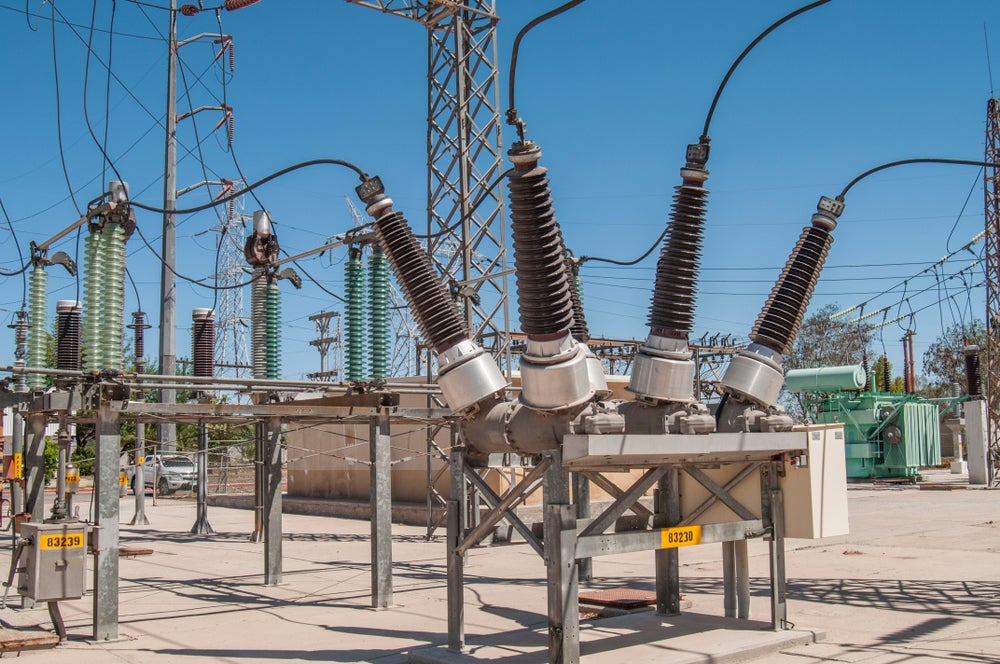Modernisation of grid infrastructure will be crucial in our transition to clean energy. Electrification lies at the heart of decarbonisation and we will need expanded electrical networks to meet growing electricity demand from industry, transport and buildings. Researchers estimate the EU alone will need €375–425bn ($414.69–469.98bn) worth of investments in electrical grids through to 2030.
Electrical infrastructure expansion is a must, but the transition to renewable energy sources will be truly green only if electricity grids are environmentally sustainable. This means they must be free of greenhouse gases (GHGs), including the potent greenhouse gas sulphur hexafluoride (SF6).

SF6 – grid insulator and silent polluter
SF6 is an effective insulator that prevents electrical discharges. Of all the SF6 produced, 80% is used to insulate switchgear, which is equipment composed of electrical disconnect switches, fuses or circuit breakers used to control, protect and isolate nodes in electricity grids.
Unfortunately, the use of SF6 comes at great environmental cost. It is the world’s most potent GHG with a global warming potential 25,200 times higher than CO2. Globally, we emit some 8,000 tonnes (t) of SF6 every year, roughly equivalent to the CO2 emissions of 100 million cars.
The environmental impacts of SF6 are poised to become even greater. By 2050, SF6 use is predicted to increase by 75% from 2019 levels in a business-as-usual scenario. This is due to increasing electrification – especially in the developing world – grid modernisation and the deployment of more grids to support new renewable energy installations.
Worse, SF6 is usually not destroyed at the end of its operational lifetime. Eliminating SF6 is difficult, costly and emissions-intensive. Researchers predict that both current and future SF6 will linger in the atmosphere for thousands of years when it leaks out during manufacturing, installation, operation, maintenance and decommissioning of electrical infrastructure.

US Tariffs are shifting - will you react or anticipate?
Don’t let policy changes catch you off guard. Stay proactive with real-time data and expert analysis.
By GlobalDataIn European medium voltage grids alone, there is a banked volume of 8,600t of SF6. This is equivalent to 196 million tonnes of CO2, more than the total annual emissions of the Netherlands. Medium-voltage grids represent roughly a third of the EU total, so the final volume of potential emissions is considerably higher if we added SF6 stored in high-voltage power lines.
EU legislation must drive SF6-free innovation
There is good news: SF6-free switchgear alternatives exist for almost all uses, and when alternatives are lacking, companies are working to develop them. Alternatives include air-insulated switchgear technologies that rely on vacuum circuit breakers, or gas-insulated switchgear that is based on gases such as nitrogen, oxygen or CO2, sometimes mixed with other fluorinated gases.
In a joint statement released in November 2021, ten switchgear technology providers, including Eaton, Schneider Electric, Siemens and nuventura announced that each of the participating companies had already developed or was in the process of developing transmission and distribution equipment ‘completely free of fluorinated gases’.
Despite these encouraging steps, SF6 use is expected to significantly increase because many industry players are reluctant to change their current methods.
Perhaps the main obstacle today is that grid operators do not have enough incentives to innovate. Their core benchmarks mainly refer to performance criteria such as transmission continuity and voltage quality. As a result, what grid operators cherish most is stability, making them hesitant to deploy new technologies.
Traditionally, stability has come first and sustainability has been an afterthought, but regulation can change this.
A new f-gas regulation: a unique opportunity for an SF6-free future
Many countries are taking regulatory action around SF6. However, few are as advanced as the EU, where rules on SF6 are set as part of a dedicated f-gas regulation.
The current regulation entered into force in 2014. At that time, policymakers did not set a date for an SF6 phase-out because they deemed that not enough viable alternatives were available. This is no longer the case. As made clear by switchgear providers themselves, SF6-free alternatives are ready to kick in.
The moment of truth is now – the European Commission is reviewing the rules. Executive Vice-President Frans Timmermans is expected to announce the proposal for a new f-gas regulation on 5 April. To meet the ambition set in the European Green Deal, the new regulation should immediately phase out SF6 and other synthetic f-gases in new and refurbished installations.
[Keep up with Energy Monitor: Subscribe to our weekly newsletter]
Moreover, the regulation should ban SF6 for the voltage levels where this is most cost-efficient and then progressively ban it from the entire grid. Policy should also incentivise the use of SF6-free alternatives by promoting them or by channelling investments towards the best alternatives; for instance, through green public procurement and the EU taxonomy for sustainable finance. All SF6 use and emissions from end of life should also be reported to governmental institutions.
Going a step further, measures should be taken to reduce emissions from the production of equipment containing SF6 in the EU. Most SF6 produced in Europe is exported, but the manufacturing emissions do occur here.
The revision of the EU's rules on f-gases is a once-in-a-generation opportunity to get rid of SF6, the world’s most potent global warming gas, and replace it with natural and sustainable alternatives. Our planet cannot afford to miss this shot.



